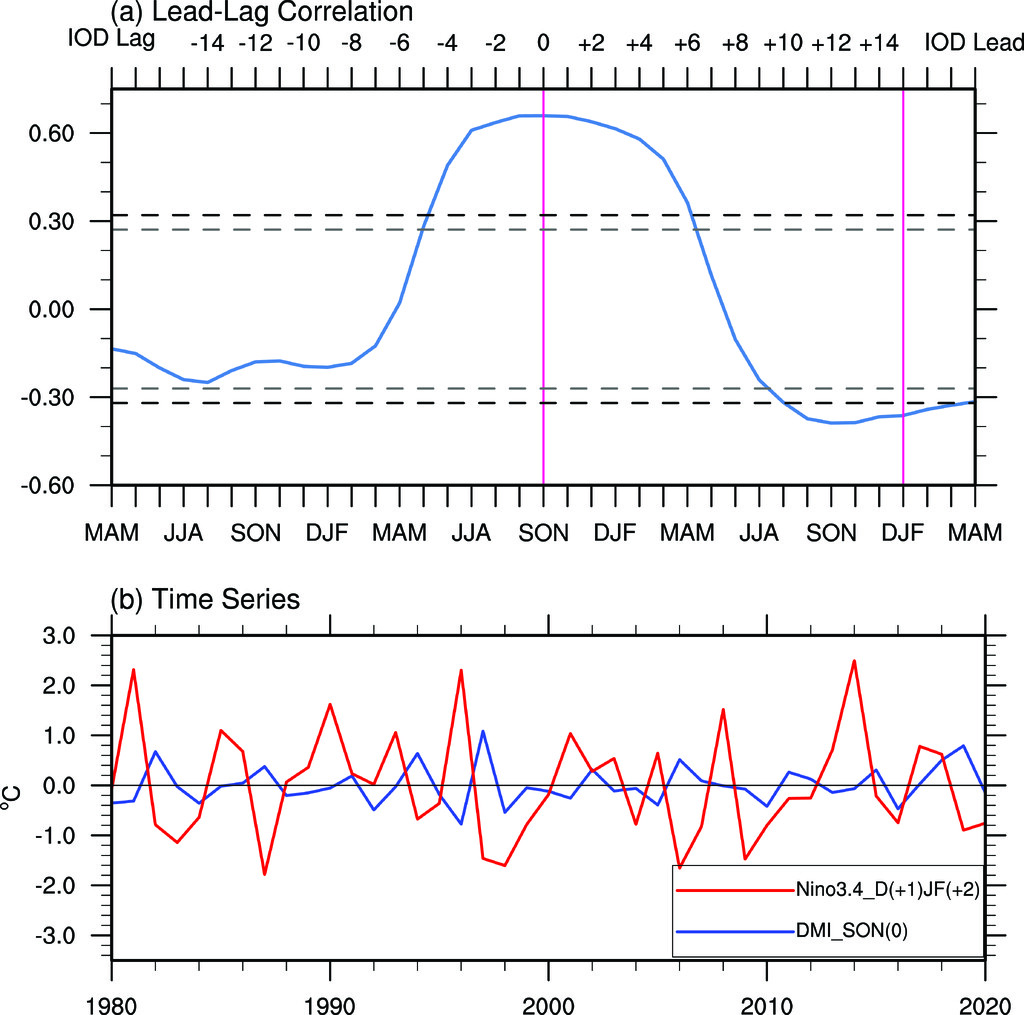Role of the Spring Sea Surface Temperature over the Southeastern Indian Ocean in Bridging the Indian Ocean Dipole and Subsequent ENSO
Yue Zhong, Wenshi Lin, Tuantuan Zhang, Dongliang Yuan, Song Yang, Shuheng Lin, and Wei Yu
Published in Journal of Climate, February 2025
A significant relationship exists between the Indian Ocean dipole (IOD) and the following year’s El Niño–Southern Oscillation (ENSO), in spite of the uncertainty in the associated mechanisms. Here, we show that the spring sea surface temperature (SST) anomalies over the southeastern Indian Ocean (SEIO) play a bridging role in the teleconnection of the IOD and subsequent year’s ENSO. A positive IOD could induce a positive tendency of SST in the SEIO region from autumn to winter, primarily through the cloud–radiation–SST feedback, forming an anomalous SEIO warming which persists into the subsequent spring. As the oceanic forcing dominates in spring, the SEIO warming can induce/maintain the anomalous anticyclonic circulation over the western North Pacific according to the Gill model response, accompanied by easterly wind anomalies over the western equatorial Pacific that generate eastward-propagating upwelling Kelvin waves. As a result, anomalous cooling appears in the central-eastern tropical Pacific in the following seasons, manifesting as a La Niña mode. Additionally, the role of the ocean channel (i.e., the Indonesian Throughflow) in connecting the spring SEIO SST and the subsequent eastern Pacific SSTs is also discussed.

Fig. (a) Lagged correlation between the boreal autumn DMI and 3-month running-averaged Niño-3.4 index. (b) Time series of autumn DMI of year 0 (blue line) and winter Niño-3.4 index of year +1 (red line). In (a), gray and black dashed lines indicate the 90% and 95% confidence levels by the Student’s t test, and the vertical pink lines indicate the autumn of year 0 and the winter of year +1, respectively. In (b), the Niño-3.4 index has a 1 year time shift. That is, the Niño-3.4 index during 1980–2020 shown in (b) is actually corresponding to the Niño-3.4 index during 1981–2021.
Zhong, Y., W. Lin, T. Zhang, D. Yuan, S. Yang, S. Lin, and W. Yu, 2025: Role of the Spring Sea Surface Temperature over the Southeastern Indian Ocean in Bridging the Indian Ocean Dipole and Subsequent ENSO. J. Climate, 38, 1305–1317, https://doi.org/10.1175/JCLI-D-24-0263.1.